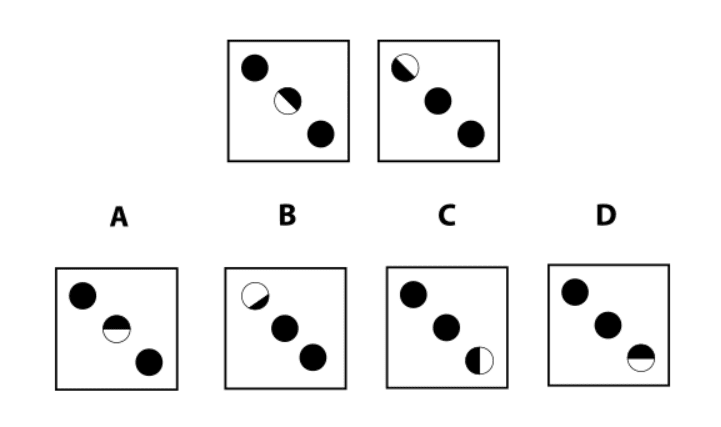Explanation:
To find the next number in the series, add 0.5 and then increase by 0.5 each time. So, starting with 0.5, moving on to 1, 1.5, 2, then 2.5, and so forth
1.5 + 0.5 =2
2 + 1 = 3
3 + 1.5 = 4.5
4.5 + 2 = 6.5
6.5 + 2.5 = 9
9 + 3 =12
12 + 3.5 =15.5
Explanation:
To determine the number of increments of temperature reduction, divide 35,000 by 1000:
35,000 divided by 1,000 = 35
Now multiply 35 by 2 to find the number of total degrees of decrease:
35 x 2 = 70 degrees
Then subtract 70 degrees from 25 degrees at sea level:
25 - 70 = -45 degrees
Explanation:
Let's think about one choice at a time:
1/3 + 3/6:
1/3 is the same as 2/6, making it easier to add the fractions:
2/6 + 3/6 = 5/6
4/2 - 3/6:
3/6 is the same as 1/2, making it easier to subtract the fractions:
4/2 - 1/2 = 3/2, or 1.5
1 - 1/10:
1 - 1/10 = 9/10
3 - 10/5:
10/5 is the same as 2, so:
3 - 2 = 1
We can see that the lowest value is 5/6, so the correct answer is: 1/3 + 3/6.
Explanation:
Distance is expressed in miles. Mass is measured in kilograms.
Explanation:
If you are friendly, you are approachable and easy to talk to. "Impoliteness" is the contrary, thus.
Explanation:
Ten pals placed a drink order. Five of them, or fifty percent, ordered beers.
There are still five pals. We are aware of one friend's gin and tonic request. There are still four pals.
We are aware that a handful of them placed a wine glass order.
But how little is a lot? It might be three, but there must be at least two.
We cannot determine how many of the friends drank non-alcoholic beverages because we are unsure of how many ordered wine.

Explanation:
All things share the property that they are made up of two circles and a semicircle. A semicircle is missing from Option B.